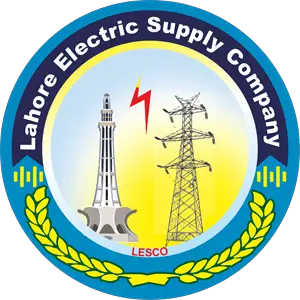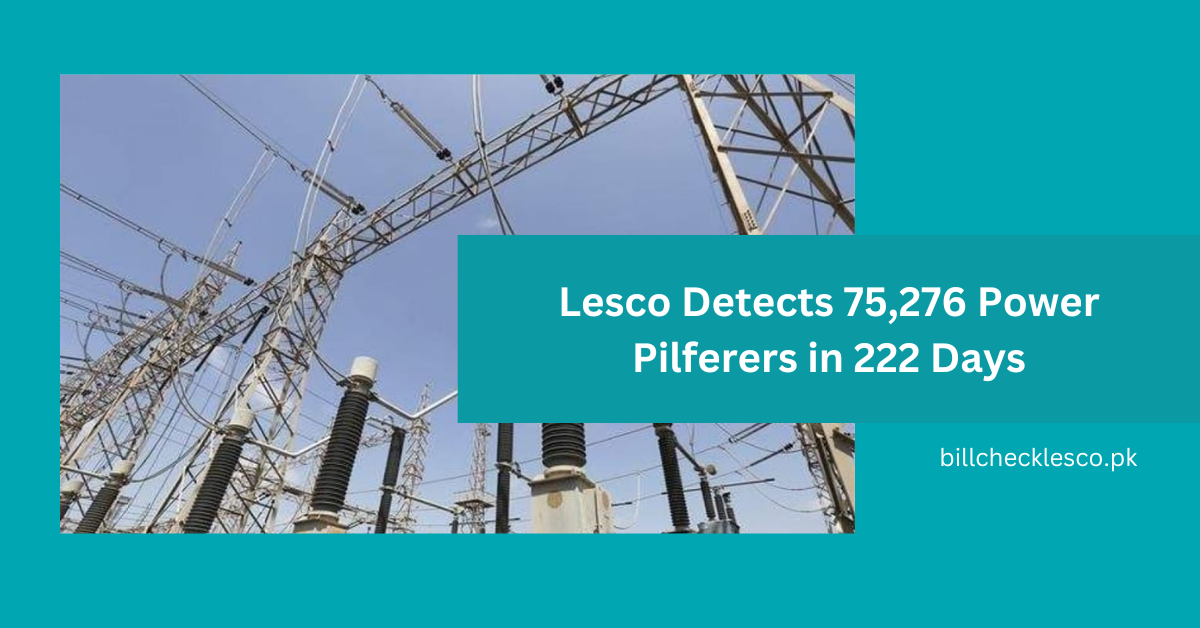Lesco Detects 75,276 Power Pilferers in 222 Days
During a rigorous 222-day campaign targeting power theft, Lahore Electric Supply Company (LESCO) has successfully uncovered 75,276 instances of electricity pilferage across its operational districts, encompassing Lahore, Sheikhupura, Nankana Sahib, Kasur, and Okara. These findings have prompted LESCO to take decisive action, with 71,540 FIRs filed against offenders and 30,031 individuals apprehended.
LESCO’s efforts have not only resulted in identifying the perpetrators but also in imposing charges totaling Rs 3,376,105,222 for 90,769,366 units of electricity unlawfully consumed. Spearheaded by CEO Engineer Shahid Haider, these operations have been executed under the directives of the Federal Power Division, signaling a concerted effort to combat electricity theft.

The resolve of LESCO’s leadership is unwavering, with assurances that the crackdown will persist until the scourge of power theft is eradicated entirely, underscoring the company’s commitment to fair and equitable electricity distribution.
Impact of Lesco 75,276 Power Pilferers
The impact of the campaign is also reflected in the significant amount of electricity unlawfully consumed by the pilferers. With a total of 90,769,366 units of electricity detected as stolen, LESCO imposed charges amounting to Rs 3,376,105,222. These measures not only serve as a deterrent to potential offenders but also seek to recover losses incurred due to electricity theft.
The detection of 75,276 power pilferers by LESCO marks a significant milestone in the ongoing efforts to combat electricity theft and ensure the integrity of the power supply system. The impact of this accomplishment reverberates across multiple dimensions:
Reduced Revenue Losses
Electricity theft contributes to significant revenue losses for power distribution companies. By identifying and addressing 75,276 instances of power pilferage, LESCO stands to recover substantial revenue that would otherwise have been lost due to unauthorized consumption.
Fair Distribution of Resources
Electricity theft unfairly burdens law-abiding consumers and strains the power grid. By cracking down on power pilferers, LESCO promotes fair distribution of electricity resources, ensuring that legitimate consumers receive the services they pay for without interruption or undue burden.
Enhanced Operational Efficiency
Unauthorized connections and meter tampering not only lead to revenue losses but also pose safety hazards and strain the infrastructure. By eliminating 75,276 instances of power theft, LESCO improves the operational efficiency of its distribution network, reducing the risk of accidents and ensuring reliable service delivery.
Deterrent Effect
The successful detection and prosecution of power pilferers send a strong message to potential offenders. The decisive action taken by LESCO, including the filing of FIRs and arrests, serves as a deterrent, discouraging others from engaging in electricity theft and thereby contributing to a culture of compliance and accountability.
Legal and Regulatory Compliance
Electricity theft is a criminal offense punishable by law. By diligently pursuing legal action against offenders, LESCO upholds the rule of law and ensures compliance with regulatory standards, fostering a conducive environment for business and investment in the energy sector.
Community Awareness and Engagement
LESCO’s efforts to combat power theft raise awareness about the consequences of electricity theft and the importance of ethical consumption practices. By engaging with the community and stakeholders, LESCO fosters a sense of collective responsibility for the sustainable use of electricity resources.
FAQs about LESCO’s Power Pilferage Detection Campaign
Conclusion
In summary, the detection of 75,276 power pilferers by LESCO represents a significant milestone in the ongoing battle against electricity theft. The impact of this achievement extends beyond financial recovery to encompass improved operational efficiency, enhanced safety, regulatory compliance, and community empowerment, ultimately contributing to a more resilient and sustainable energy infrastructure.

